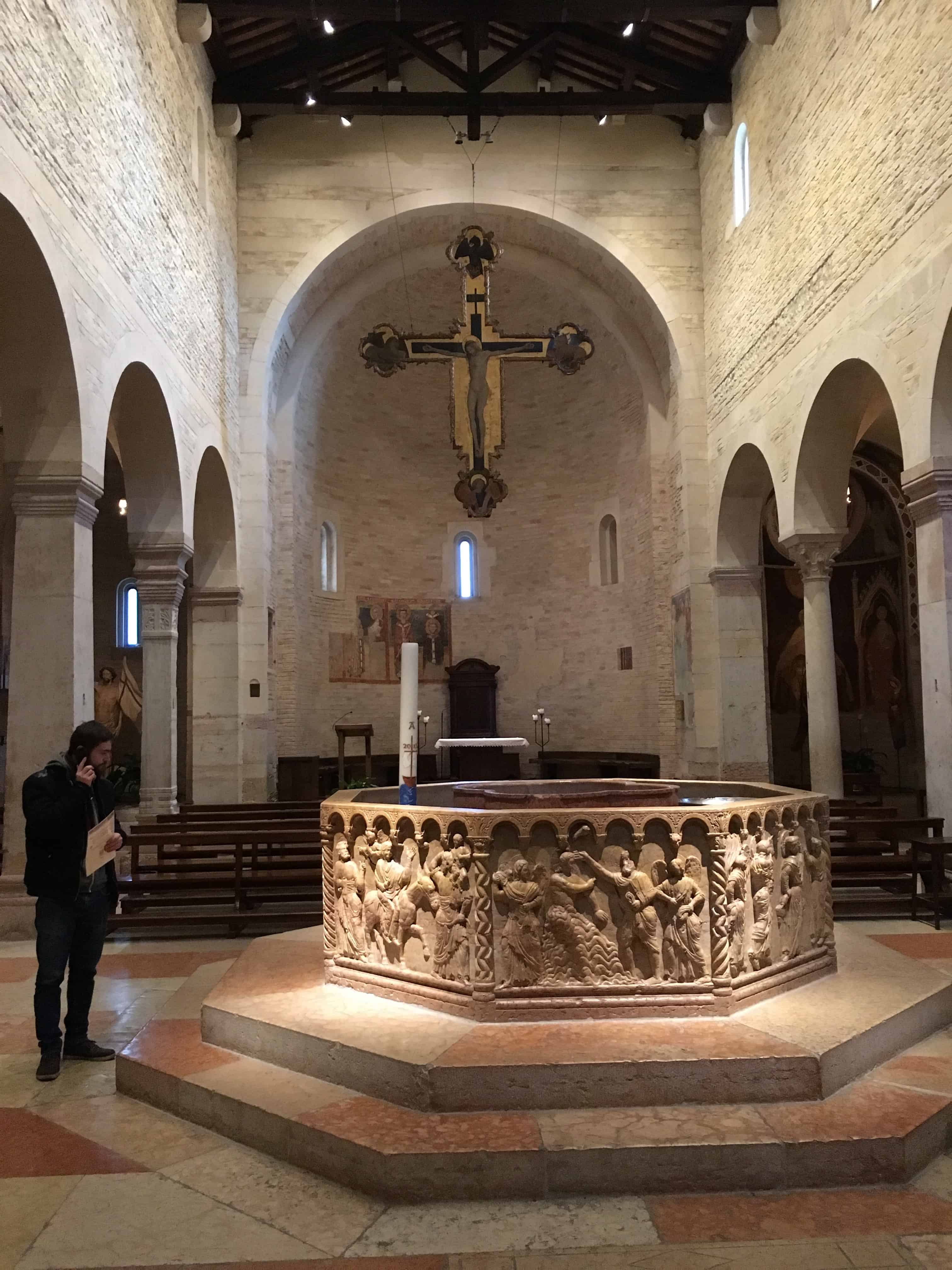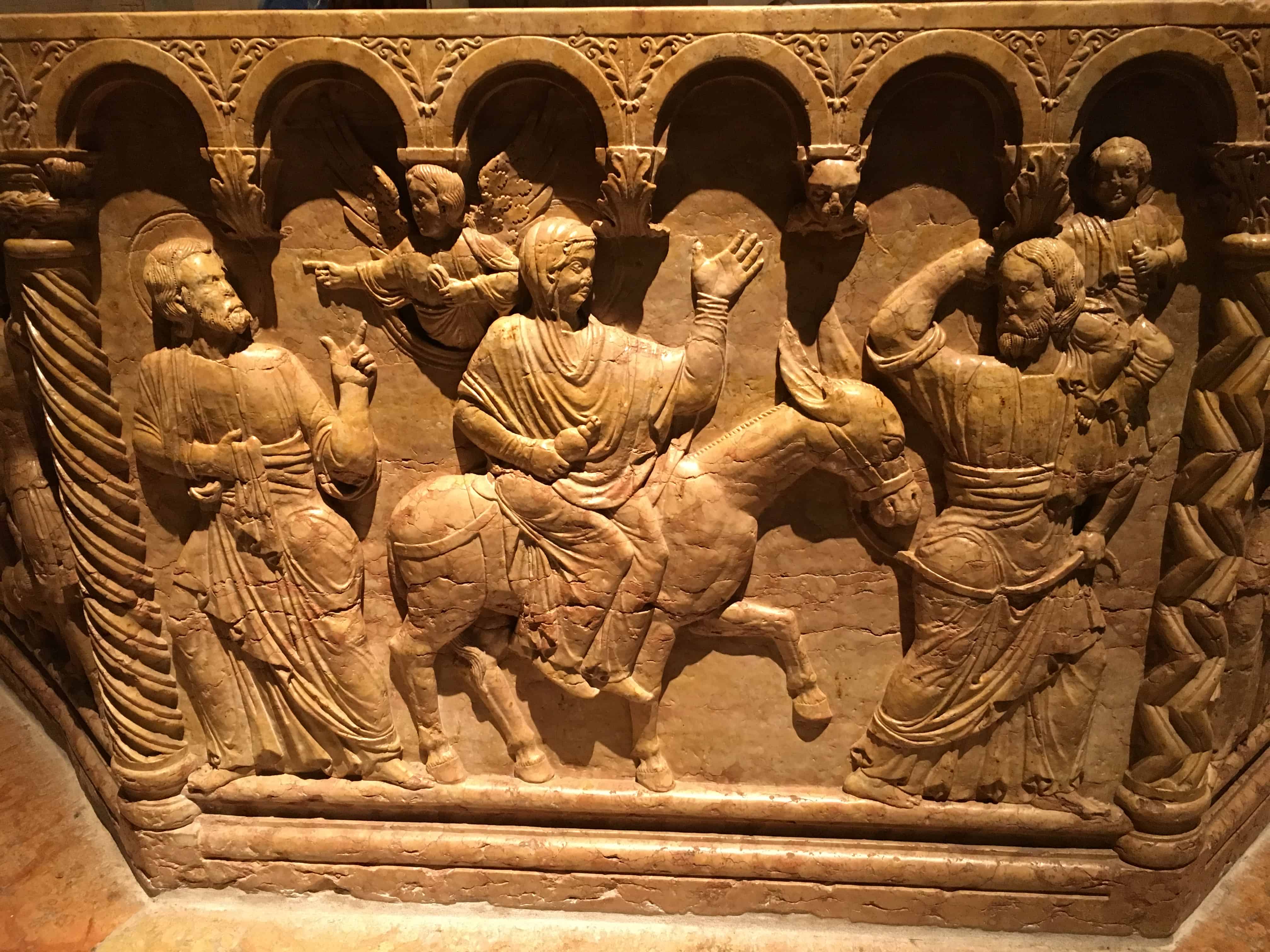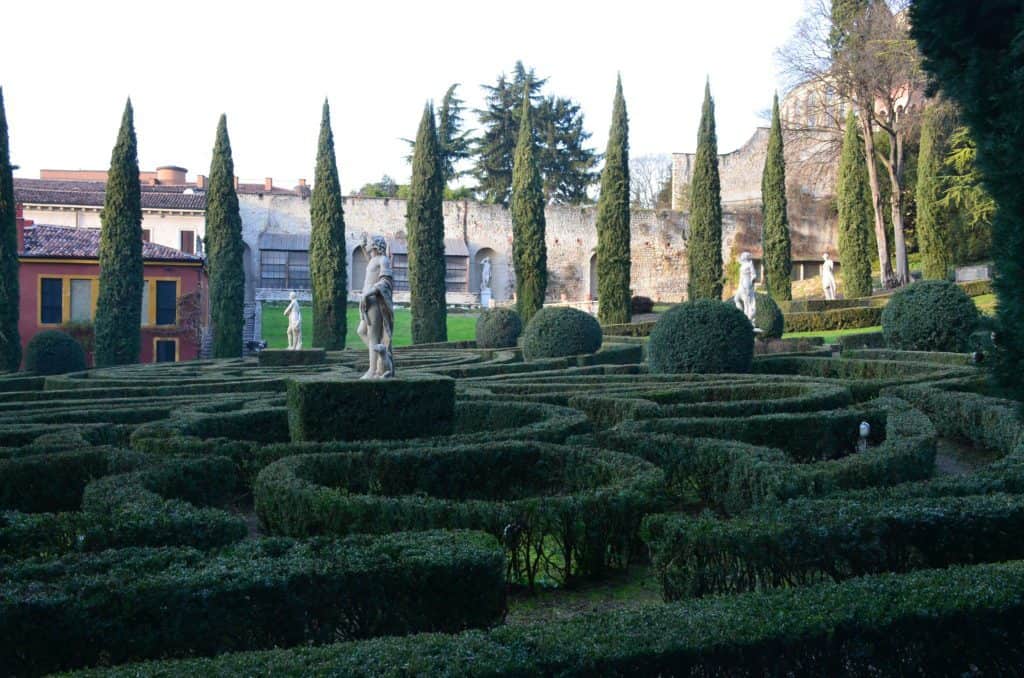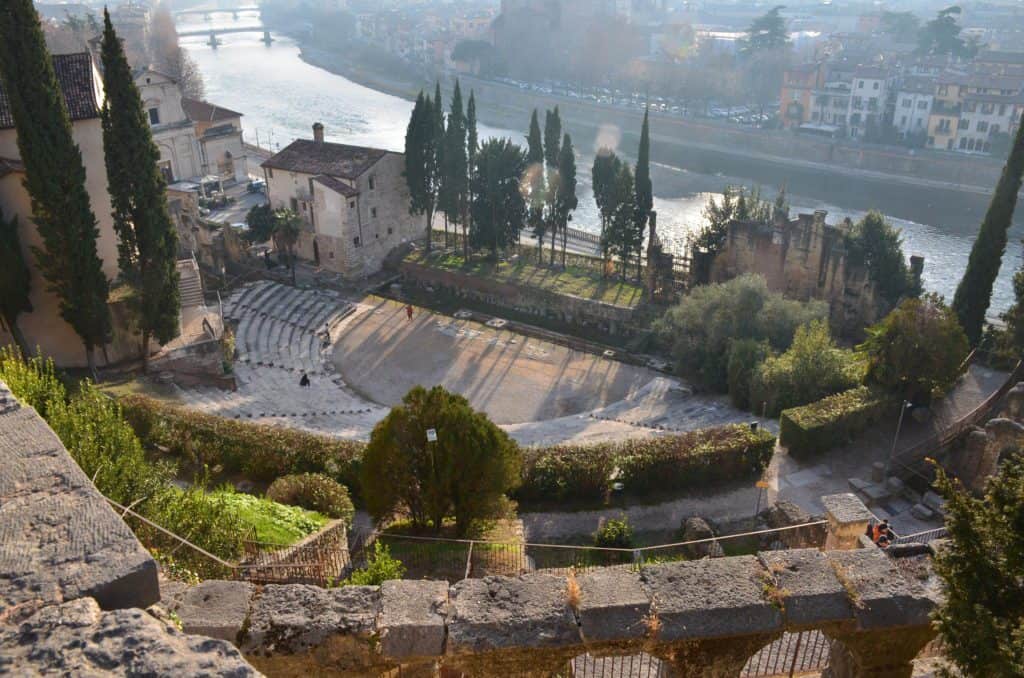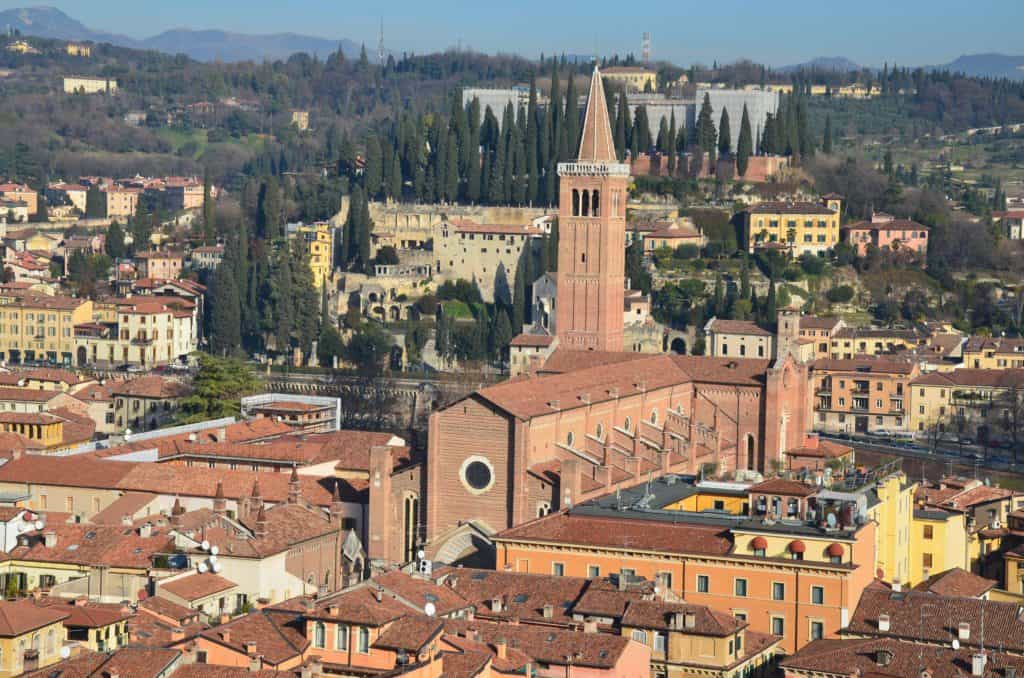Last updated on .
The Duomo of Verona (Duomo di Verona) serves as the city’s cathedral and is one of the most incredible churches to visit in the UNESCO World Heritage listed city of Verona.
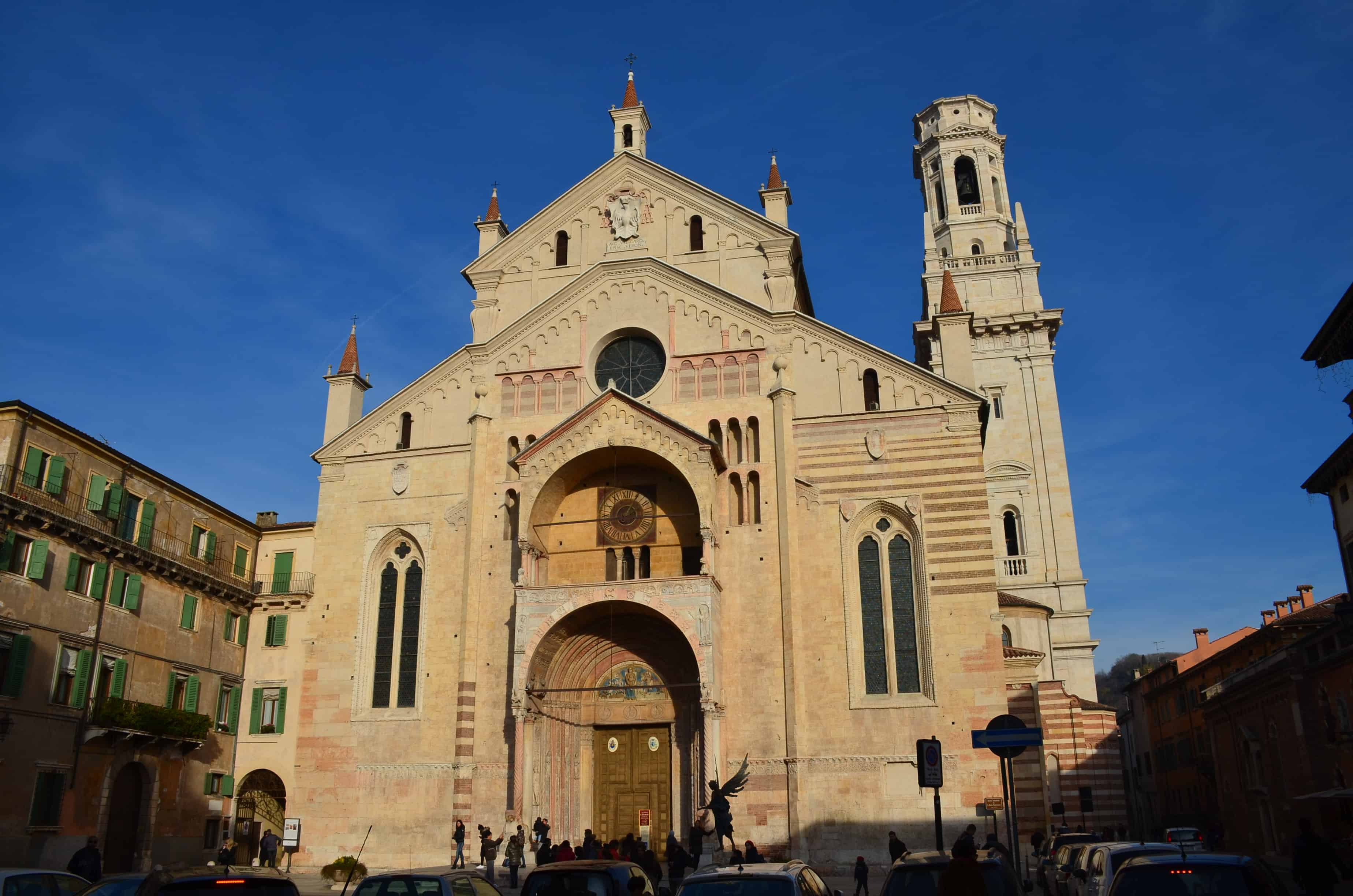
History
The Romanesque cathedral was built on the site of two ancient paleo-Christian churches that were destroyed in an earthquake in 1117. It was consecrated on September 13, 1187, and has undergone several renovations since then.
Admission
Admission is €4 (as of August 2024) or free for children up to 11 and holders of a Verona Card. The church is open daily, and the ticket gives you access to the entire Duomo complex including the Church of Saint Helen, Baptistry of Saint John, and an archaeological area. A free audio guide is included in the admission.
Another option for tickets is to pay €8 (as of August 2024) to get access to four churches in Verona, including Saint Anastasia, San Zeno, and San Fermo.
Exterior
The façade of the Duomo of Verona contains a few 14th century Gothic windows, a clock, and the coat of arms of Cardinal Agostino Valier (1531-1606), the Bishop of Verona from 1565 to 1599.
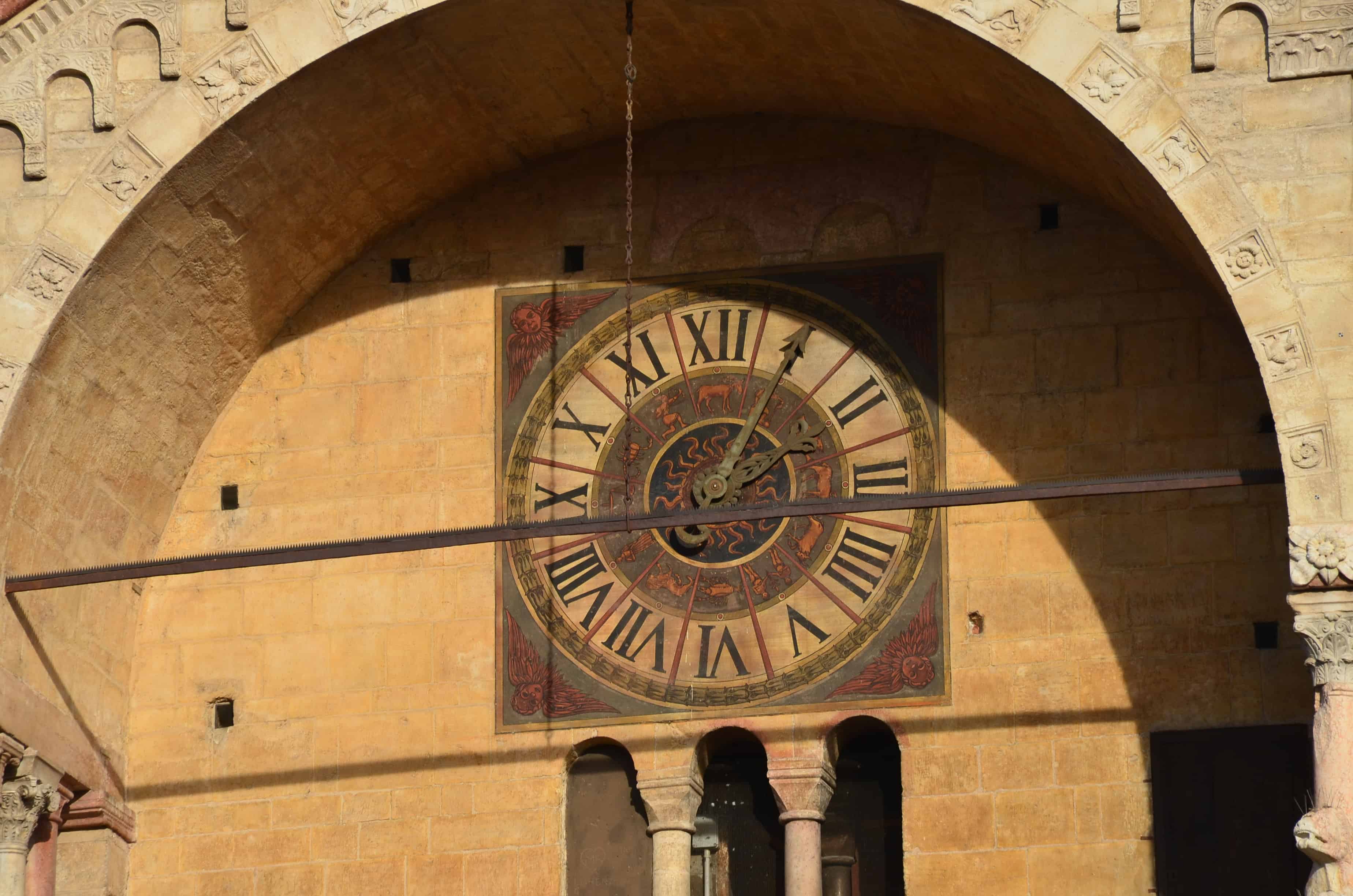

The portal was carved by Niccolò and includes a bas-relief of the Madonna and Child surrounded by the Magi and shepherds. It’s supported by columns resting on the back of two griffins, while the figures of Charlemagne’s crusaders Roland (d. 778) and Oliver sit on either side.

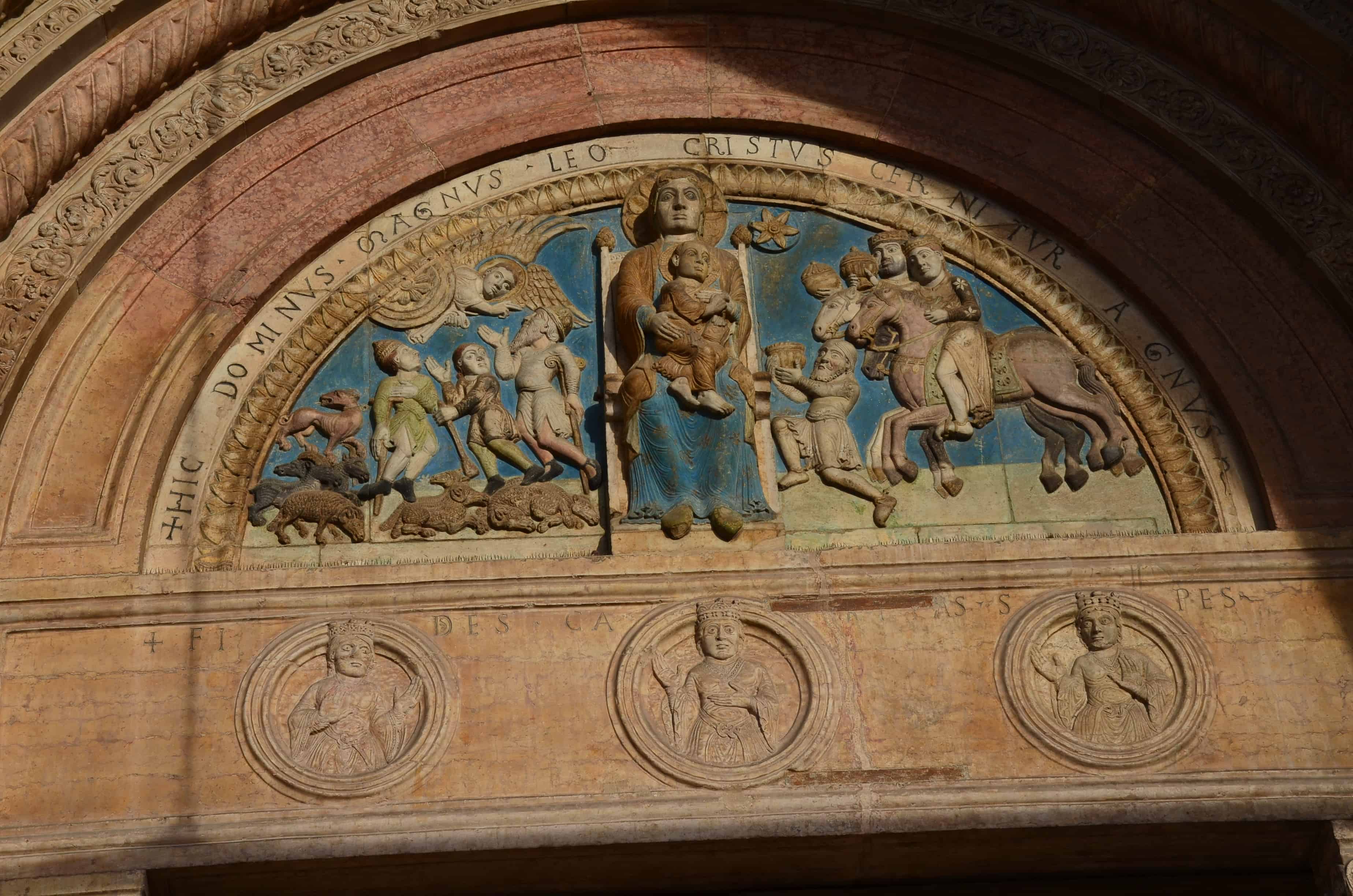
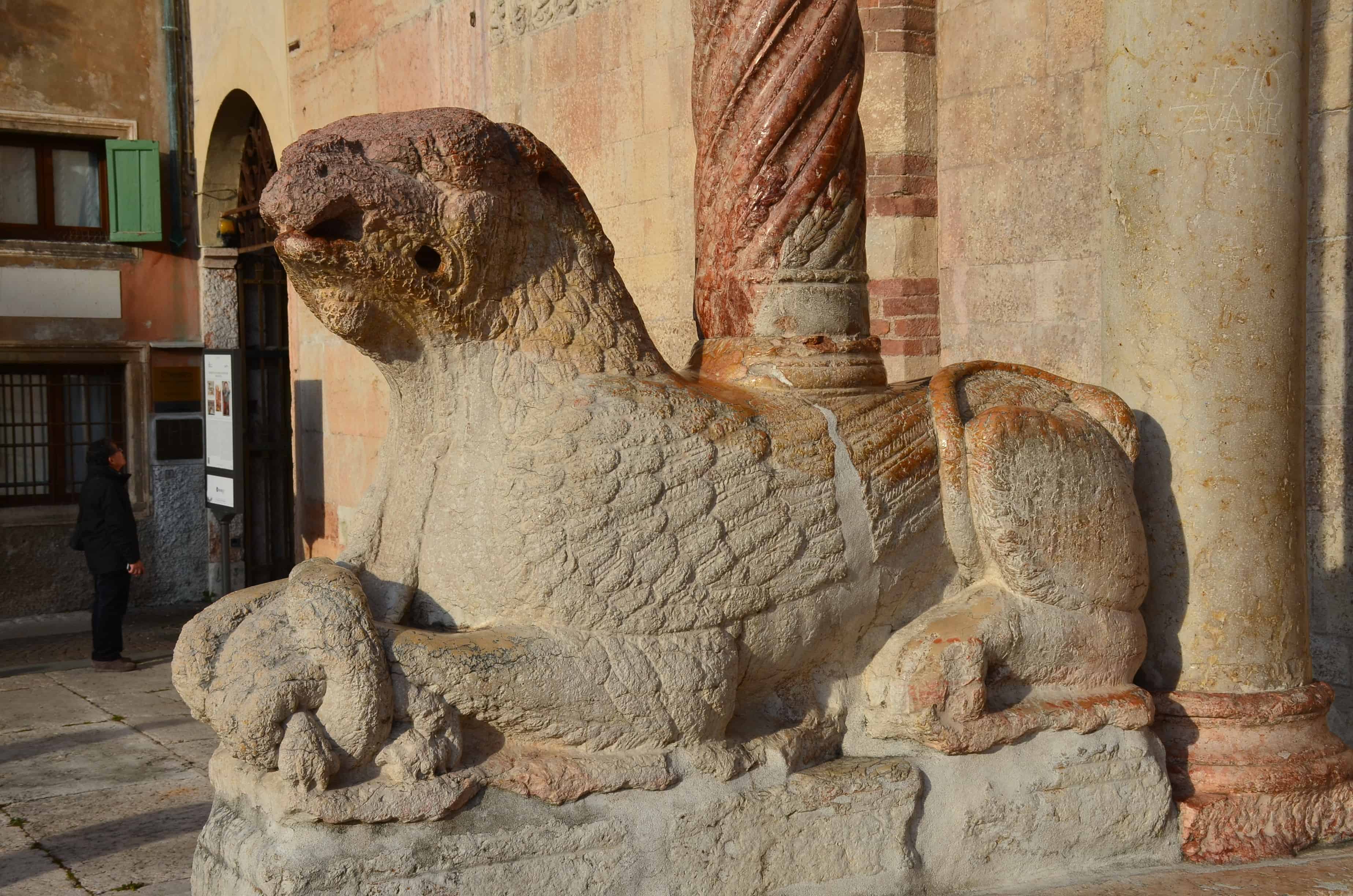
The bell tower, which is unfinished, was designed by Michele Sanmicheli (1484-1559) in the 16th century and remains unfinished. It stands just under 75m high.
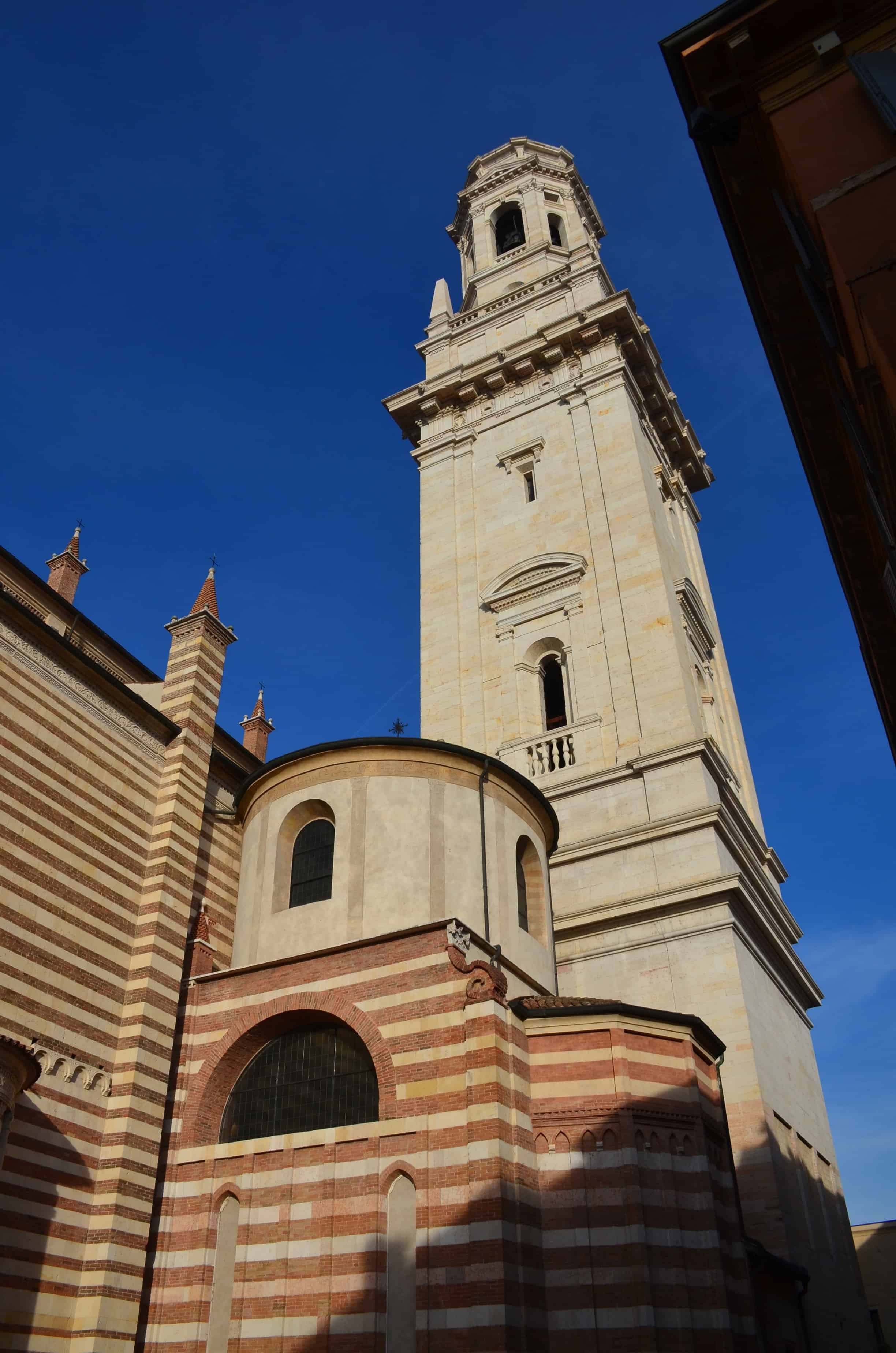
Around Piazza Duomo, the square which the Duomo faces, there are also a couple of interesting buildings I noticed.
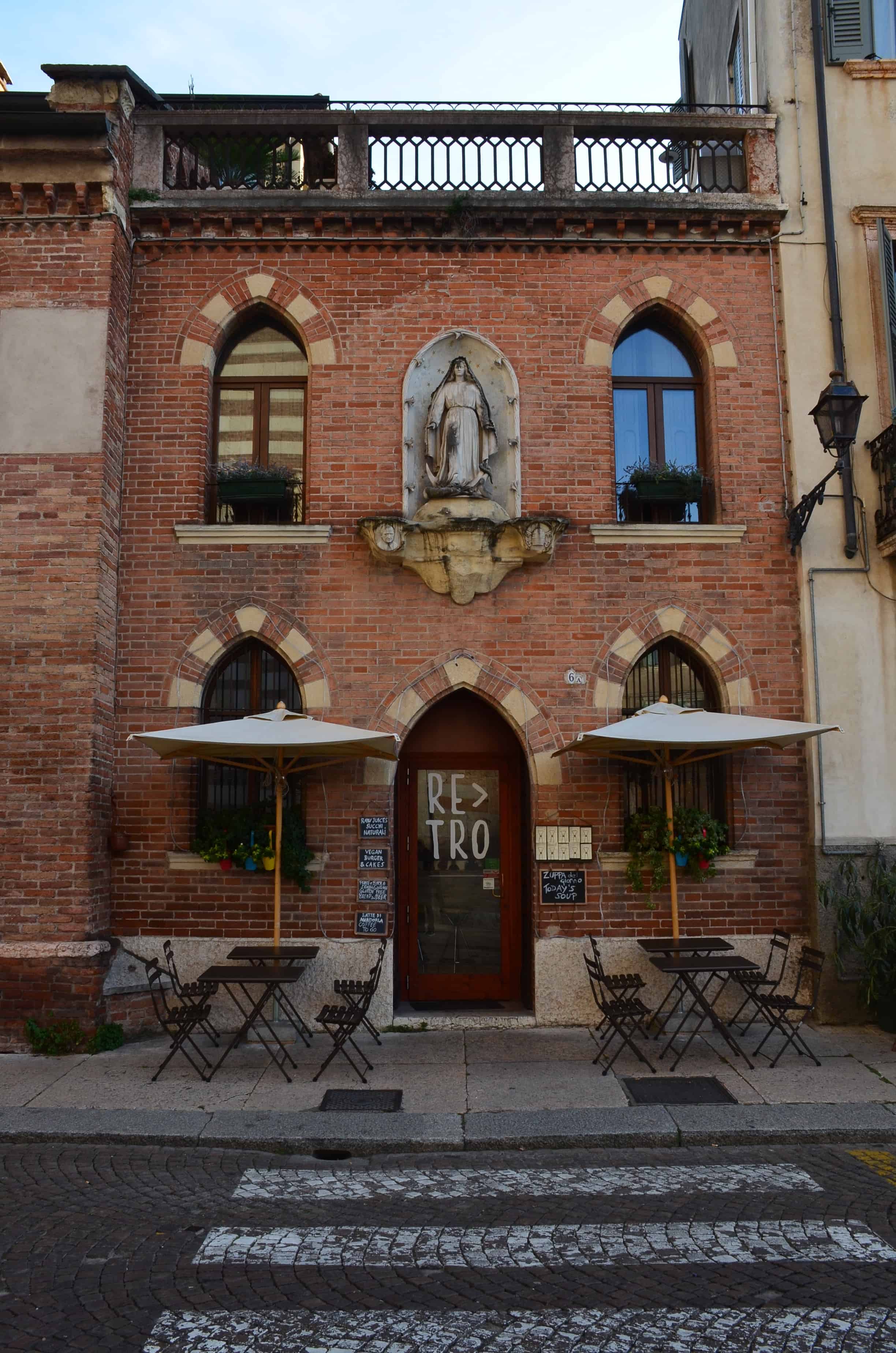
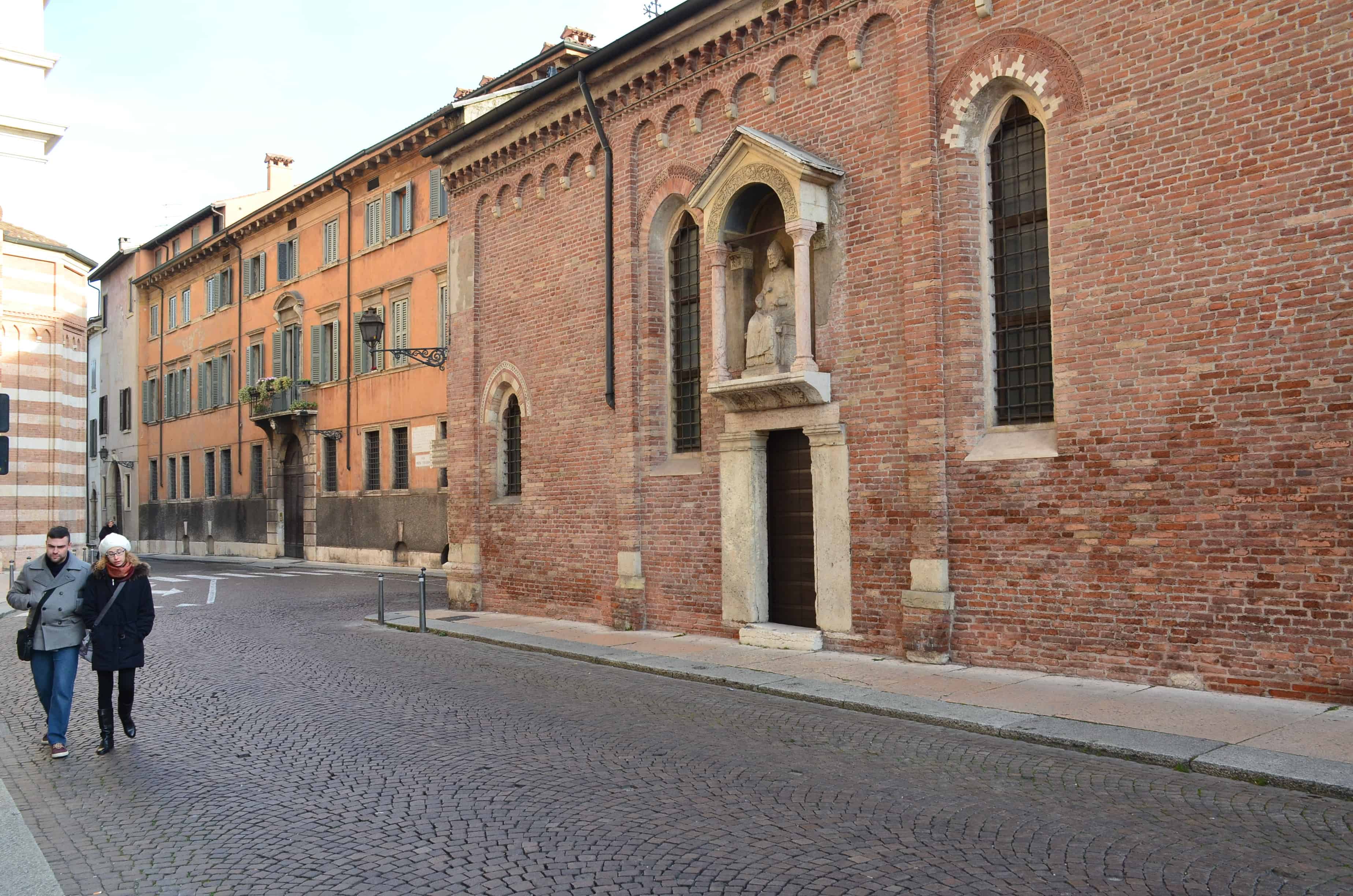
Tourist Entrance
To enter the building, you have to walk around to the back. At the entrance, you can pay for your admission ticket. Notice the Diocese of Verona building next to the entrance.
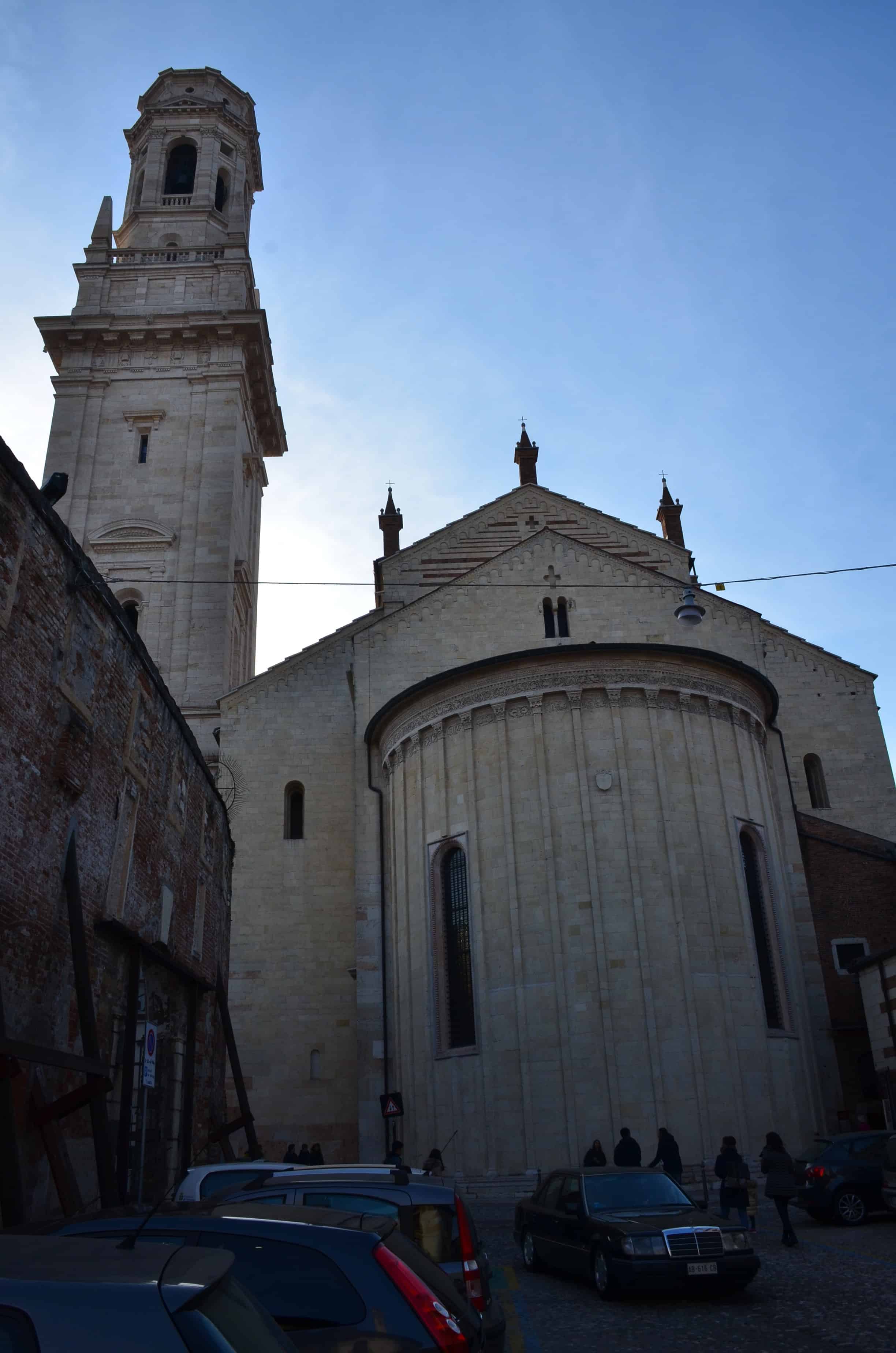
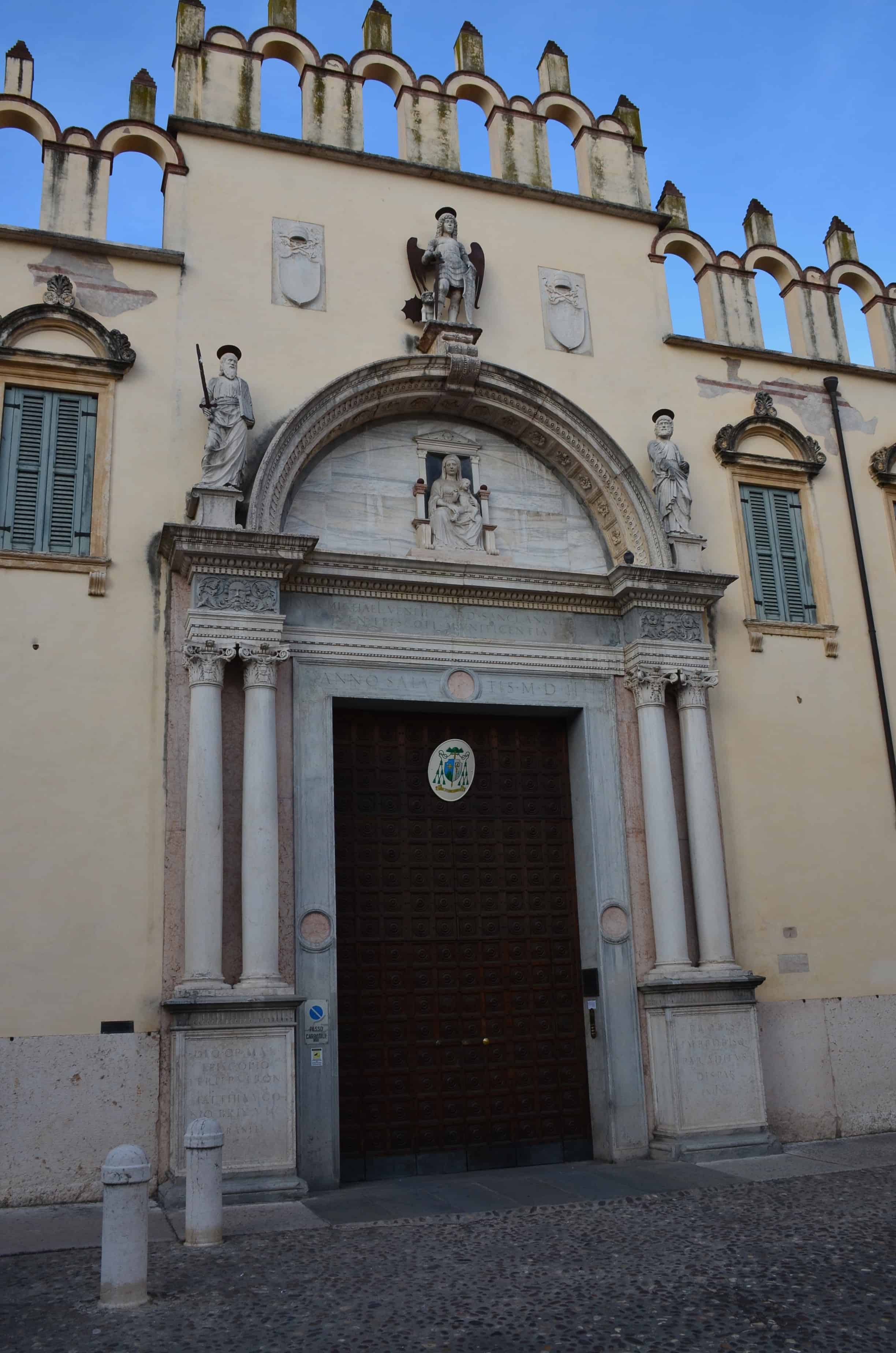
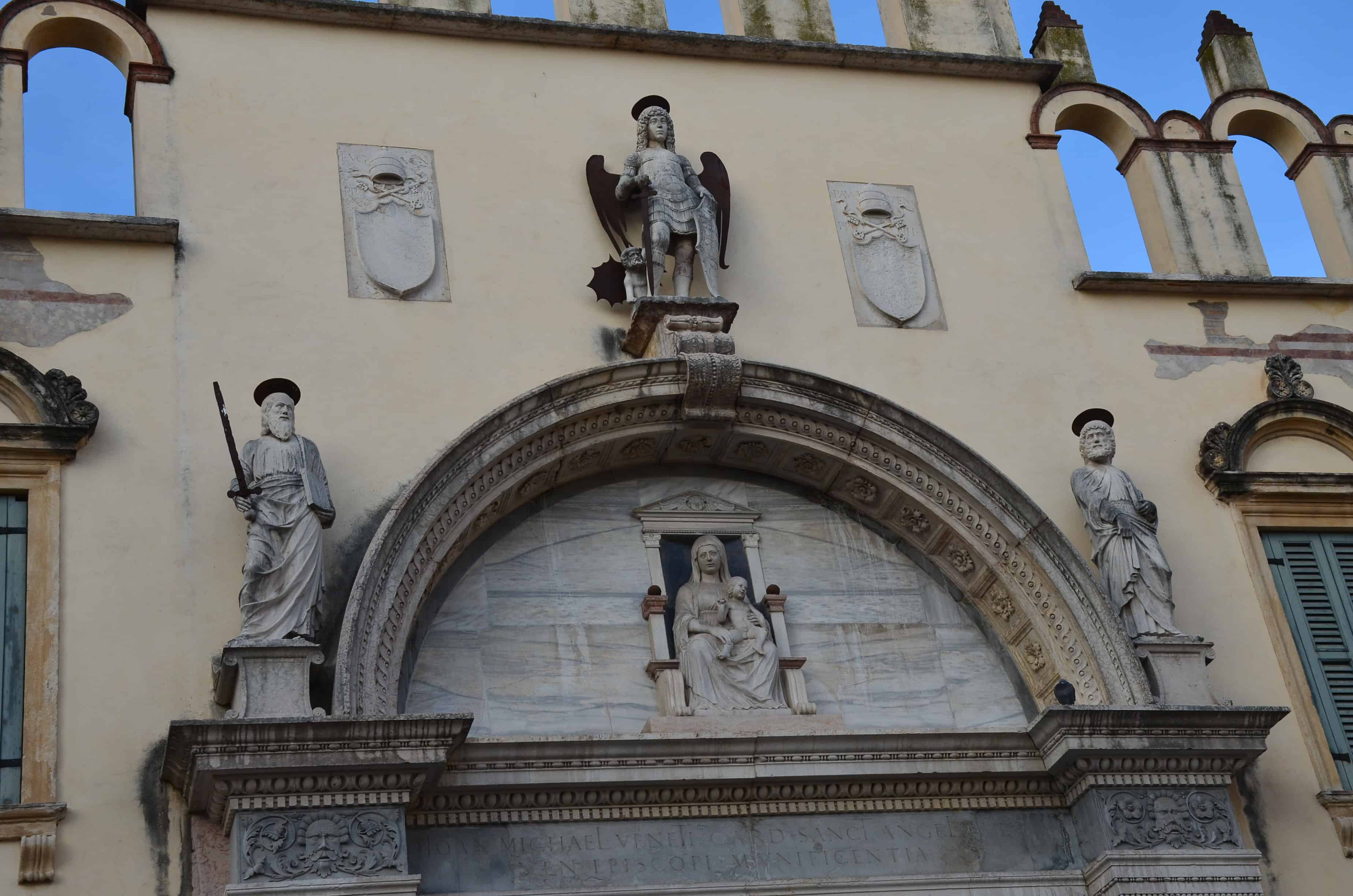
Church of Saint Helen
Before entering the Duomo, we visited the archaeological area and the Church of Saint Helen (Chiesa di Sant’Elena). It sits on the site of the very first Christian place of worship in Verona, which was built by Saint Zeno in the 4th century.

A church dedicated to Saints George and Zeno was built on the site and consecrated between 842 and 847, but was destroyed in the earthquake of 1117. The current church is the result of the reconstruction of the destroyed church, which was completed in 1140.

The archaeological excavations reveal elements from the 4th century basilica including a mosaic floor.
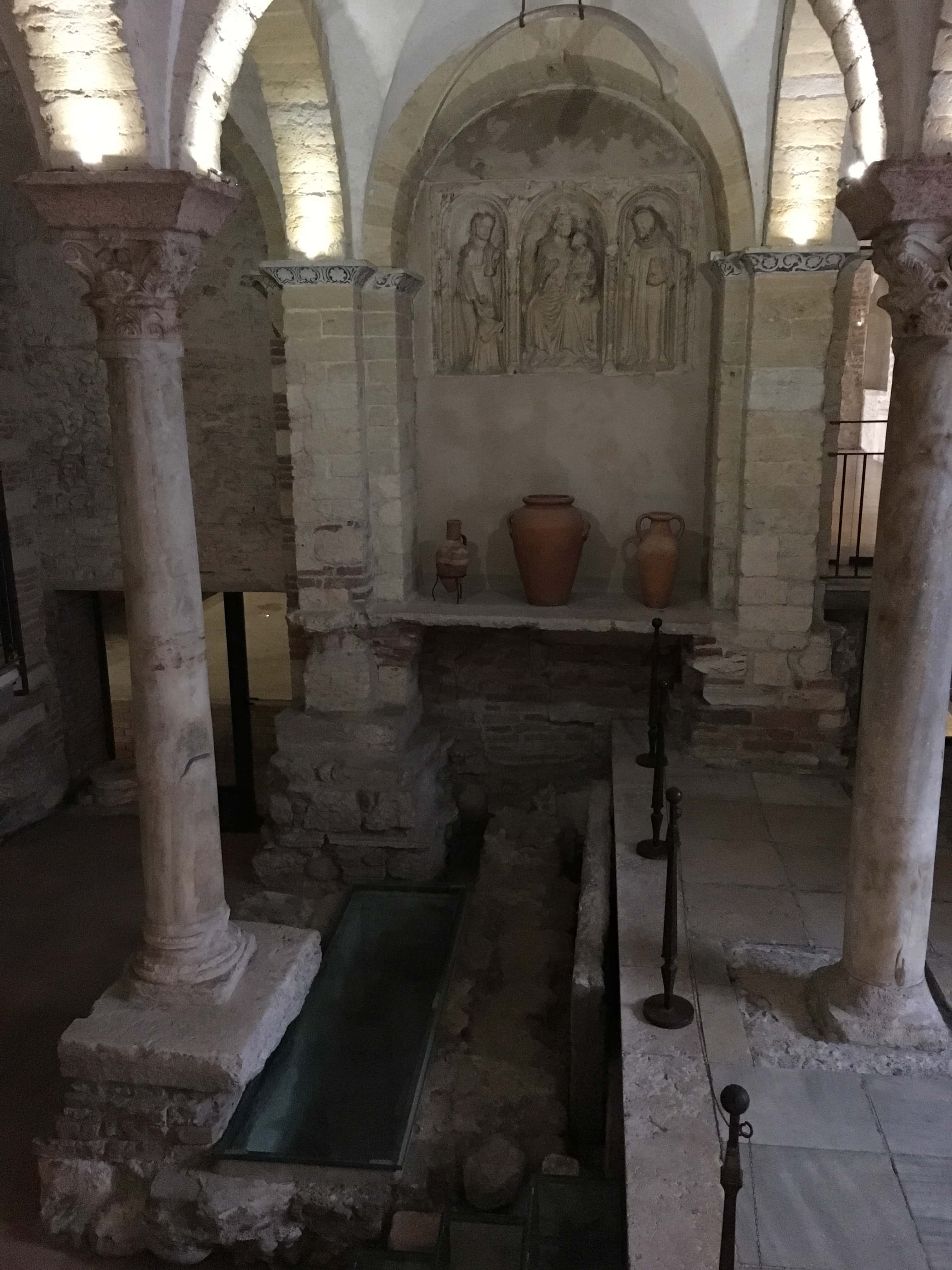
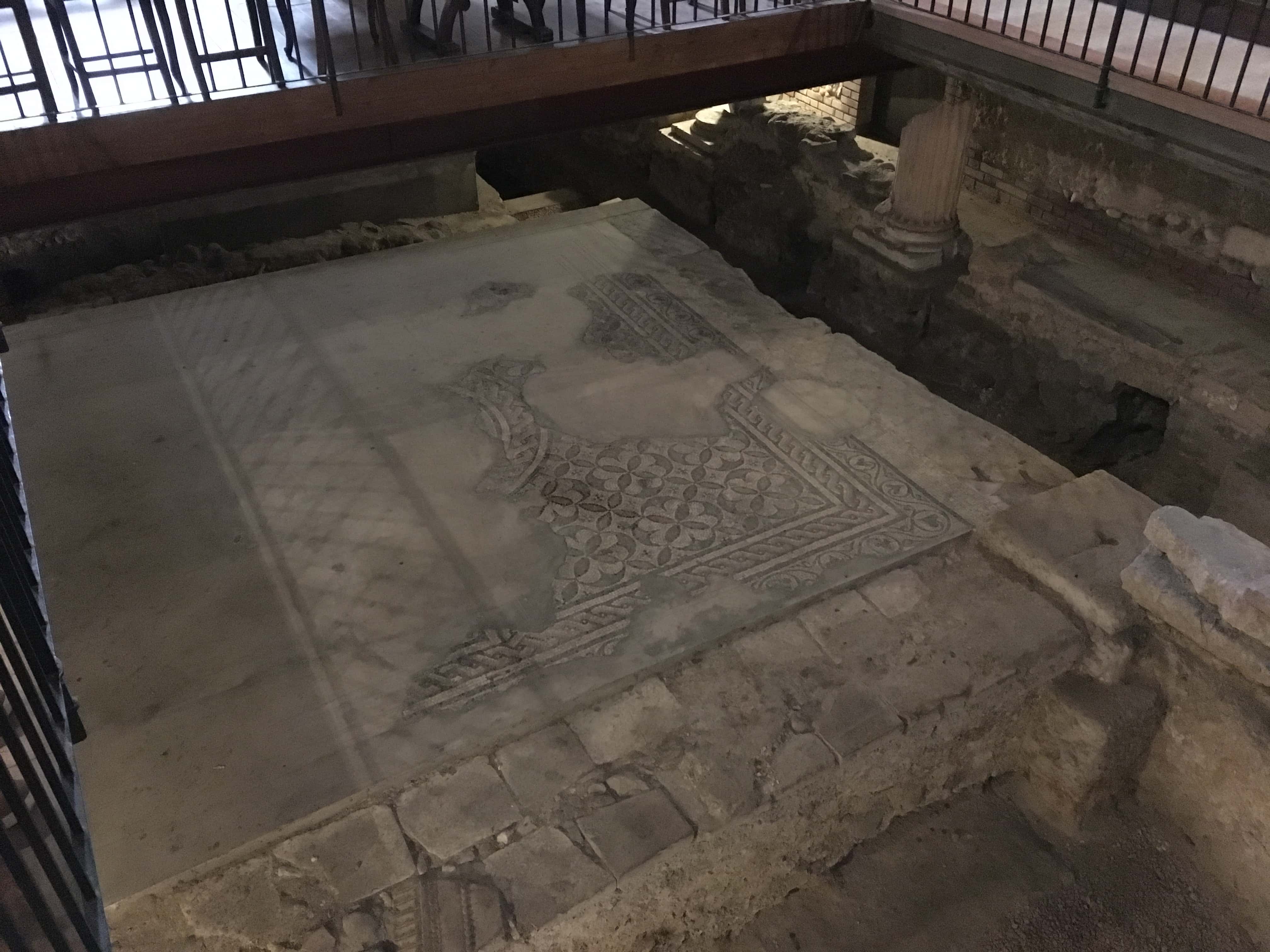
Interior of the Duomo
Next, we entered the nave of the Duomo. It’s a feast for the eyes, with huge rose-colored marble columns, impressive frescoes, and ornately decorated side chapels and altars.
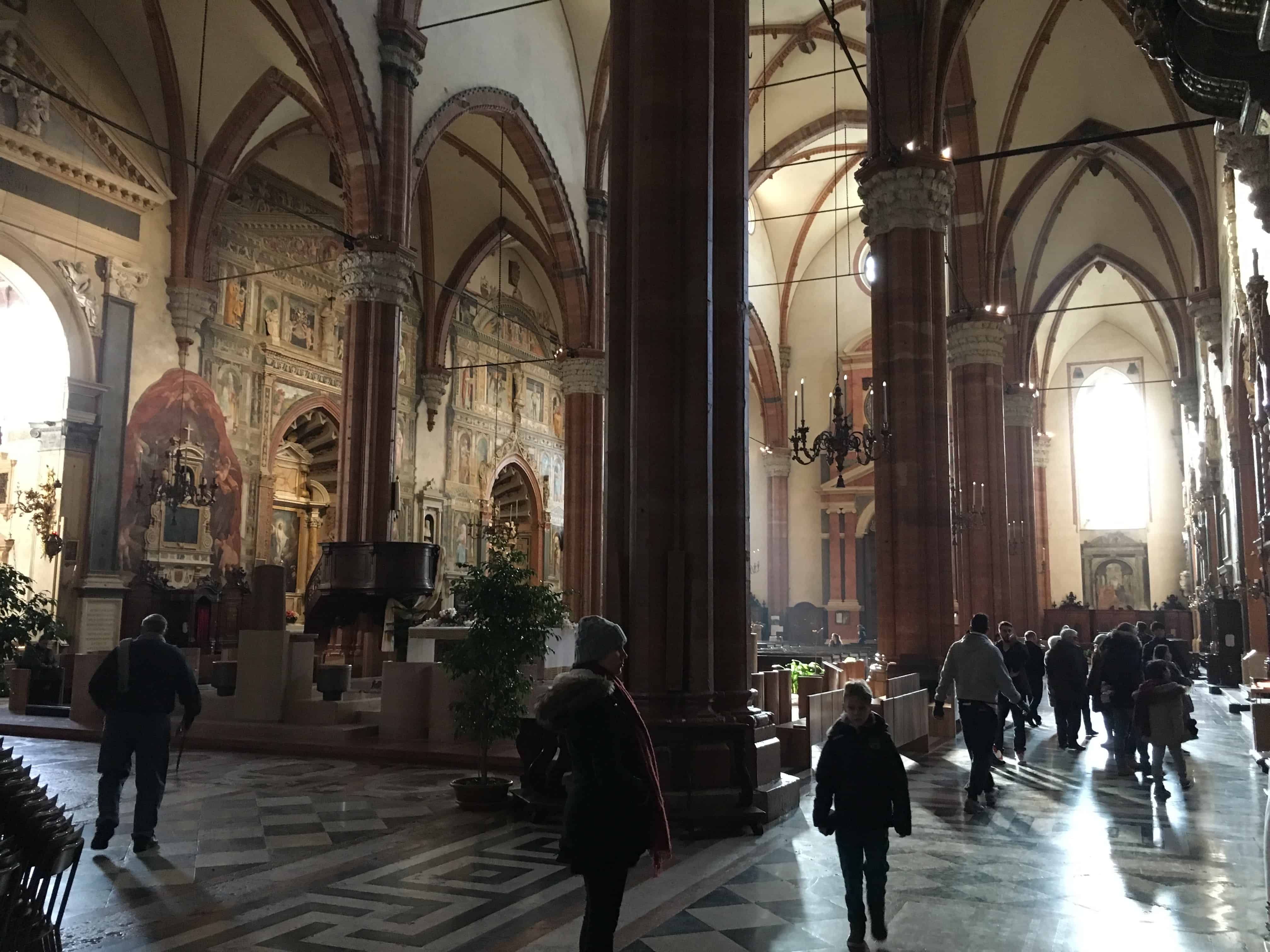
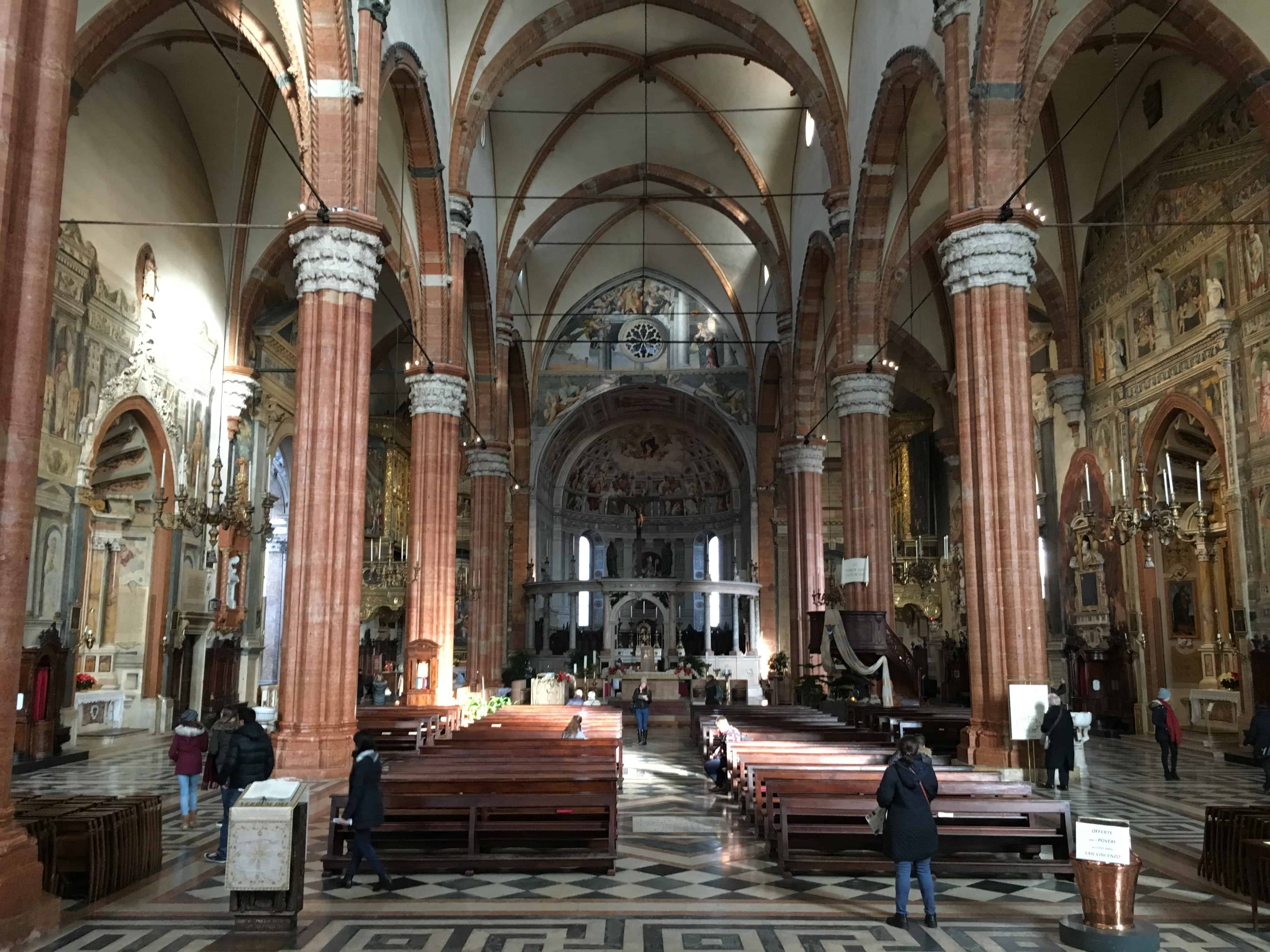
In the side altars, most of the paintings were done by Veronese artists, but the most famous one is a 1535 representation of the Assumption of the Virgin by Titian (1488-1576). There’s also the tomb of Antonio Cesari (1760-1828), a linguist and a purist of the Italian language.

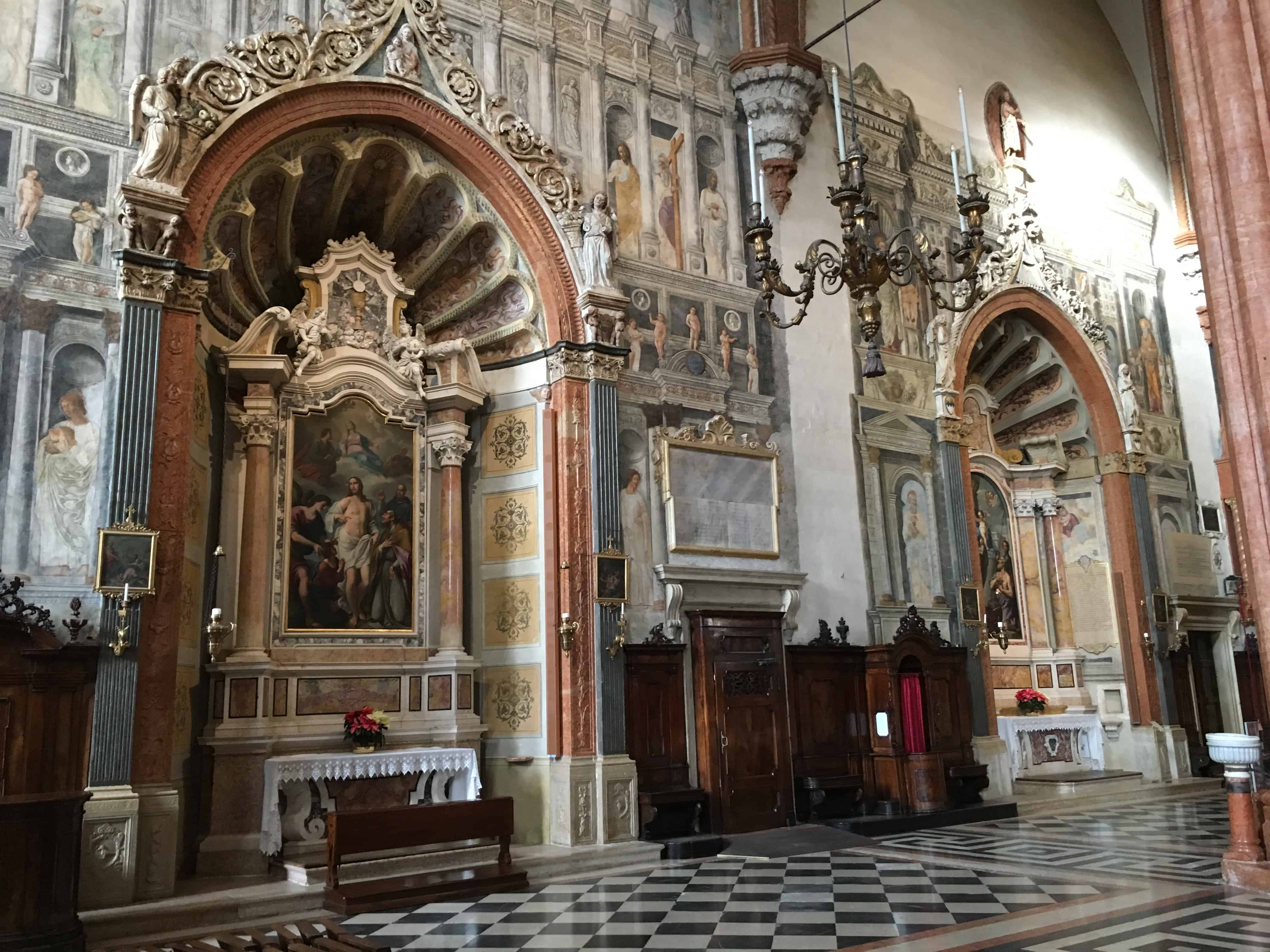
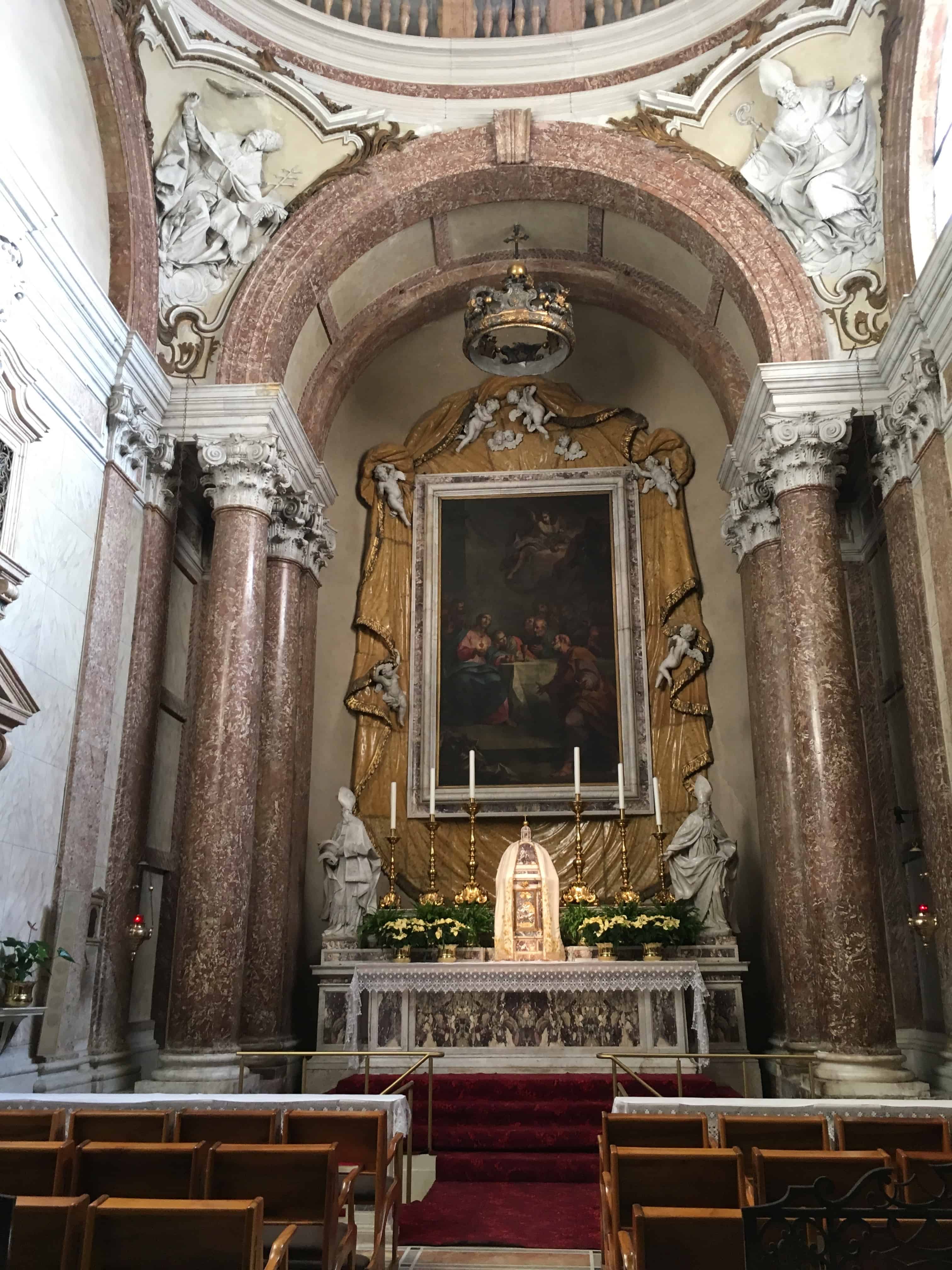


To the right of the main altar is the tomb of Pope Lucius III (c. 1100-1185). Behind it is the Major Chapel (Cappella Maggiore), designed by Michele Sanmicheli. It contains a fresco in the apse by Francesco Torbido.
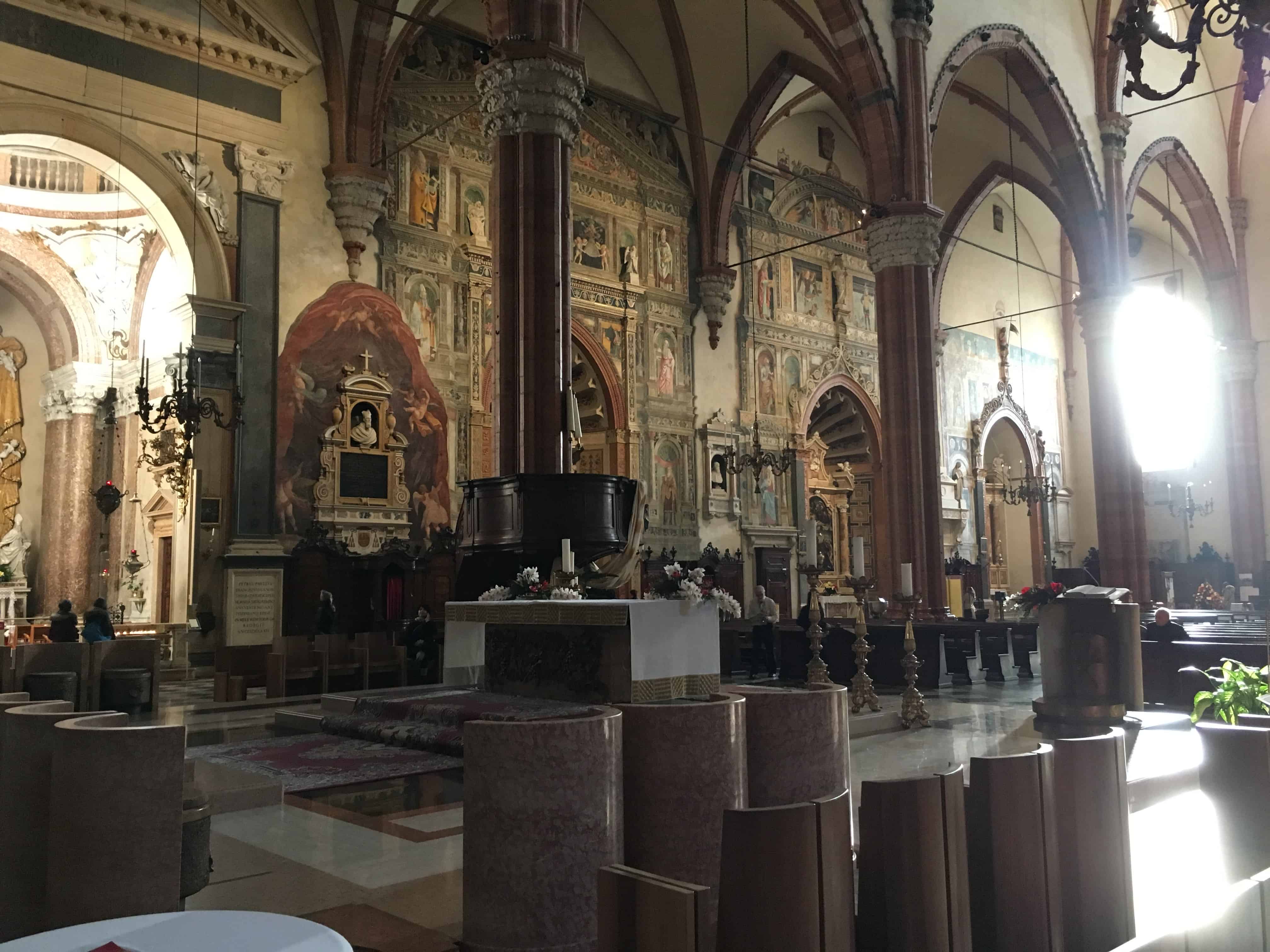
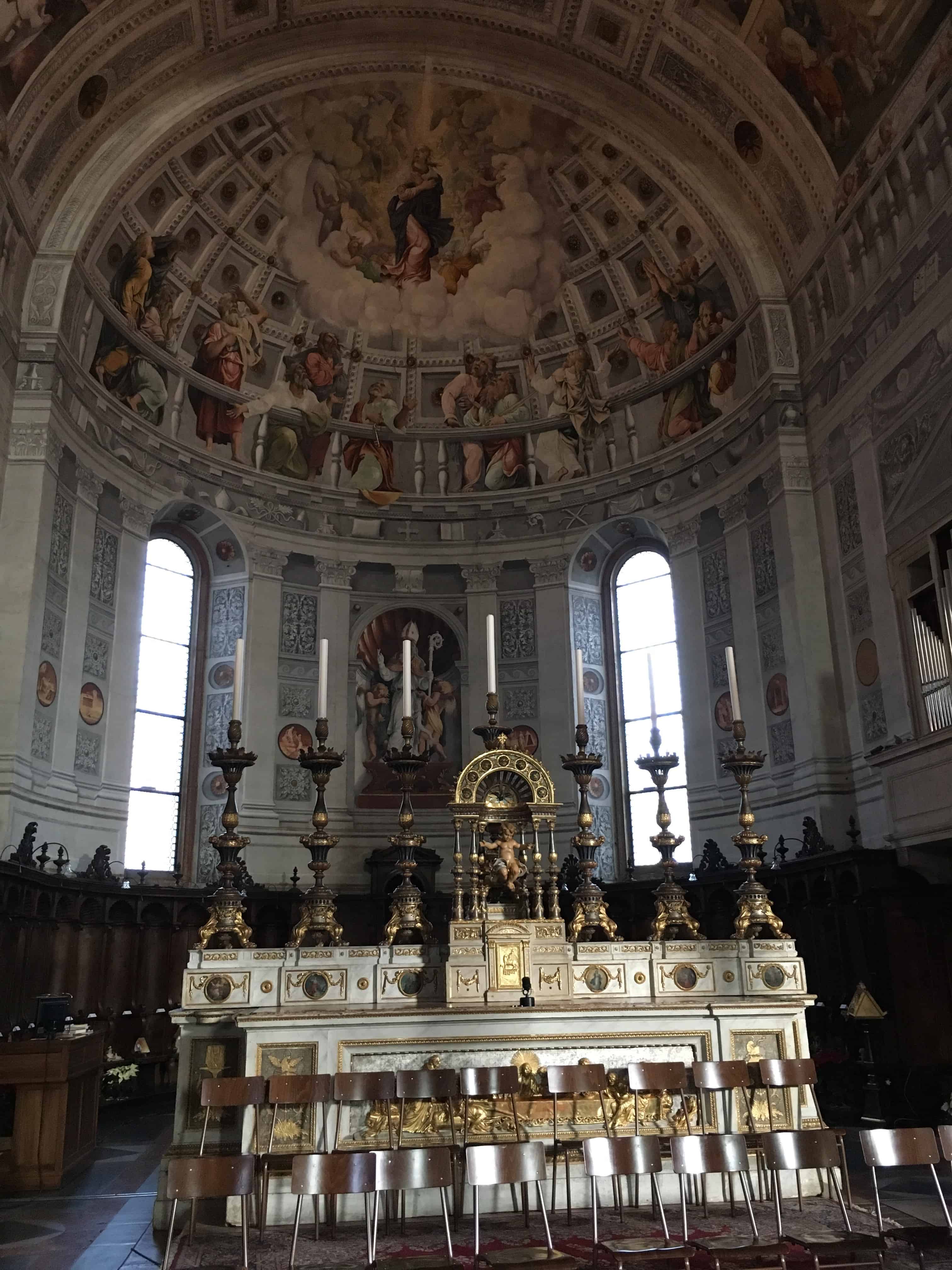
On either side of the altar are two pipe organs. Both are contained in a wooden box flanked by two columns and paintings on either side.


Baptistry
Finally, before leaving the complex, we visited the Baptistry of Saint John (Battistero di San Giovanni in Fonte). Originally built in the first half of the 10th century, it was destroyed in the earthquake of 1117 and rebuilt between 1120 and 1123. A marble baptismal font sits in the center.
